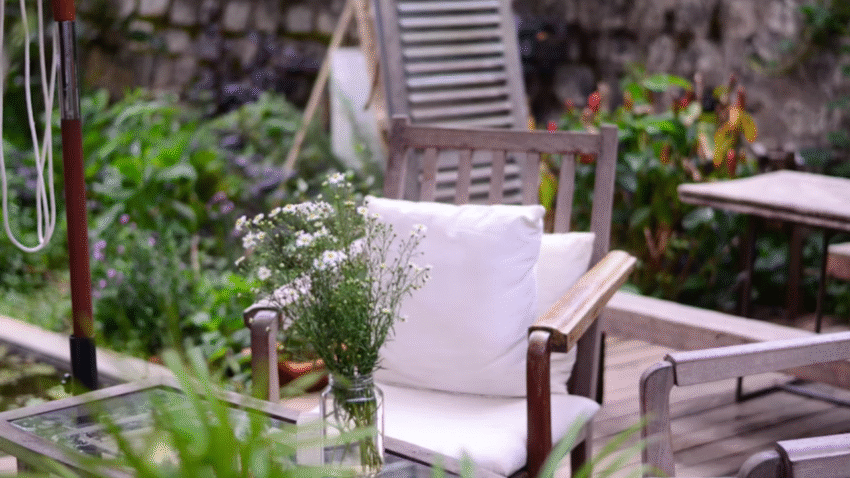Introduction
If your deck looks faded, weathered, or dull, it may be time to give it a facelift. Learning how to re-stain a deck for a fresh look is one of the easiest ways to restore its beauty and extend its life. Over time, sunlight, rain, and foot traffic wear down the finish, leaving the wood vulnerable to damage. Re-staining not only revives color and grain but also provides protection against the elements.
Why Re-Staining a Deck Matters
Re-staining isn’t just about aesthetics—it’s also about preservation. Benefits include:
- Restored Appearance: Revives the wood’s natural color or adds a stylish new tone.
- Protection: Shields against UV rays, moisture, and mildew.
- Extended Lifespan: Prevents cracking, warping, and splintering.
- Low-Cost Upgrade: Less expensive than replacing boards or rebuilding.
Without re-staining, decks become brittle, gray, and prone to rot, forcing costly repairs down the line.
Step-by-Step Guide to Re-Staining a Deck
1. Choose the Right Time
Timing is crucial for staining success:
- Weather: Dry conditions with no rain in the forecast for 48–72 hours.
- Temperature: Between 50°F–85°F (10°C–30°C).
- Sunlight: Stain in the morning or on a cloudy day to prevent streaking.
2. Gather Tools and Materials
You’ll need:
- Deck cleaner or wood brightener
- Stiff-bristle brush or broom
- Pressure washer (optional, on low setting)
- Sandpaper or power sander (60–80 grit)
- Drop cloths and painter’s tape
- Deck stain (oil-based or water-based)
- Paintbrush, roller, or pump sprayer
- Protective gear: gloves, goggles, and mask
3. Clear the Deck
Remove furniture, planters, rugs, and grills. Sweep away dirt, leaves, and debris. Clearing the space gives you full access to every board.
4. Inspect and Repair
Check for damaged boards, loose nails, or protruding screws. Replace rotten planks, sand down splinters, and secure fasteners before staining.
5. Clean the Deck Thoroughly
A clean surface ensures proper stain adhesion:
- Apply deck cleaner or wood brightener.
- Scrub with a brush to remove dirt, mildew, and old finishes.
- Rinse with a garden hose or pressure washer on low pressure (<1,500 PSI).
- Allow the deck to dry completely—24 to 48 hours is best.
6. Sand the Surface
Light sanding removes old stain residue and smooths rough patches:
- Use 60–80 grit sandpaper with a sander.
- Focus on high-traffic areas where stain wears most.
- Sweep or vacuum away dust before staining.
7. Choose the Right Stain
Different stain types offer varying results:
- Transparent Stain: Shows natural grain but less UV protection.
- Semi-Transparent Stain: Adds subtle color while highlighting grain.
- Solid Stain: Offers maximum coverage and durability but hides wood texture.
Pick a stain designed for outdoor decks and your preferred look.
8. Protect Surrounding Areas
Lay drop cloths over plants, siding, and walkways. Tape off railings or trim to avoid accidental staining.
9. Apply the Stain
- Stir (not shake) the stain for even consistency.
- Start with railings, posts, and edges using a brush.
- Use a roller or sprayer for large deck surfaces.
- Apply thin, even coats along the grain of the wood.
- Work in small sections to maintain a wet edge and prevent lap marks.
10. Apply a Second Coat (If Needed)
Some stains require a second coat for depth and durability. Wait the recommended drying time between coats (usually 4–24 hours).
11. Allow to Dry and Cure
- Light foot traffic: after 24–48 hours.
- Replace furniture: after 72 hours or when fully cured.
- Avoid heavy use until stain is completely dry.
Common Mistakes to Avoid
- Mistake: Staining Without Cleaning
Dirt and mildew block stain absorption.
Solution: Always clean and dry thoroughly. - Mistake: Skipping Sanding
Old finishes prevent new stain from bonding.
Solution: Sand lightly before staining. - Mistake: Applying Too Much Stain
Thick coats become sticky or peel.
Solution: Use thin, even layers. - Mistake: Staining in Direct Sun
Heat causes streaks and uneven absorption.
Solution: Work in shade or on overcast days. - Mistake: Ignoring Drying Times
Walking too soon ruins finishes.
Solution: Wait 48–72 hours before heavy use.
Extra Patio & Deck Tips & Hacks
- Test stain on a hidden section to confirm color.
- For added protection, apply a clear sealant after staining.
- Maintain your deck by cleaning annually and re-staining every 2–3 years.
- Store leftover stain properly for touch-ups later.
- Use felt pads under patio furniture to prevent scratches.
Looking for more wood-care tips? See our guide on how to seal a wooden deck for protection.
Conclusion
Learning how to re-stain a deck for a fresh look is one of the simplest ways to breathe new life into your outdoor space. By cleaning, sanding, and applying stain carefully, you’ll restore color, protect against damage, and extend your deck’s life.
Pro tip: Preparation is everything—spend time cleaning and sanding, and your stain will last longer and look better. Bookmark this guide and make re-staining part of your regular deck maintenance routine.
